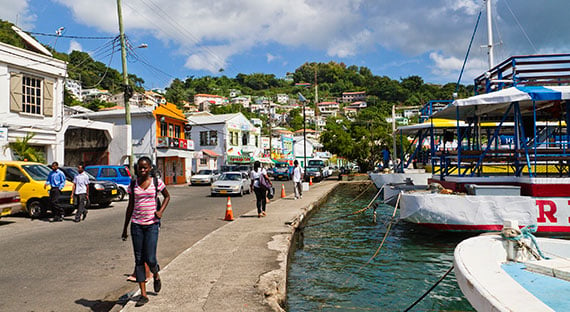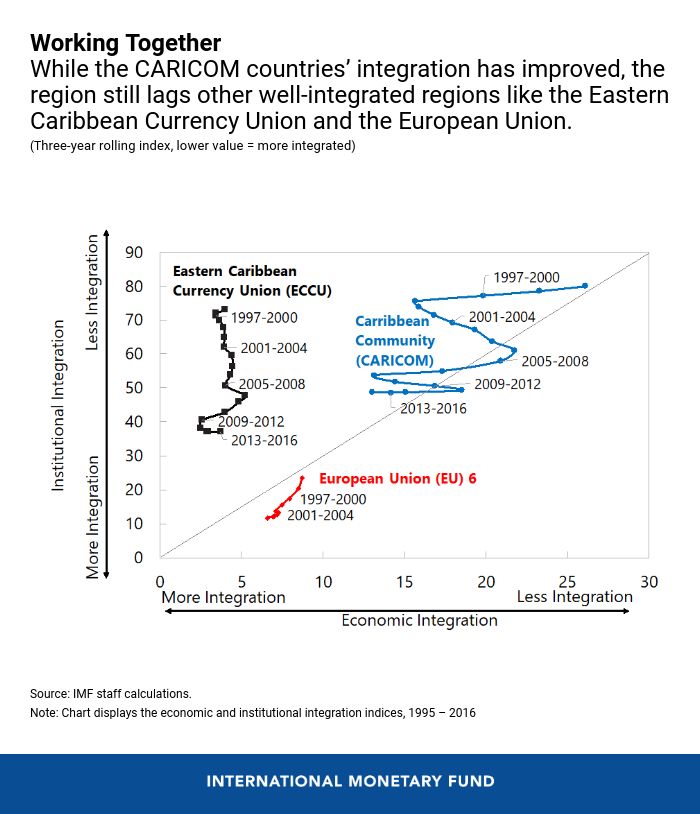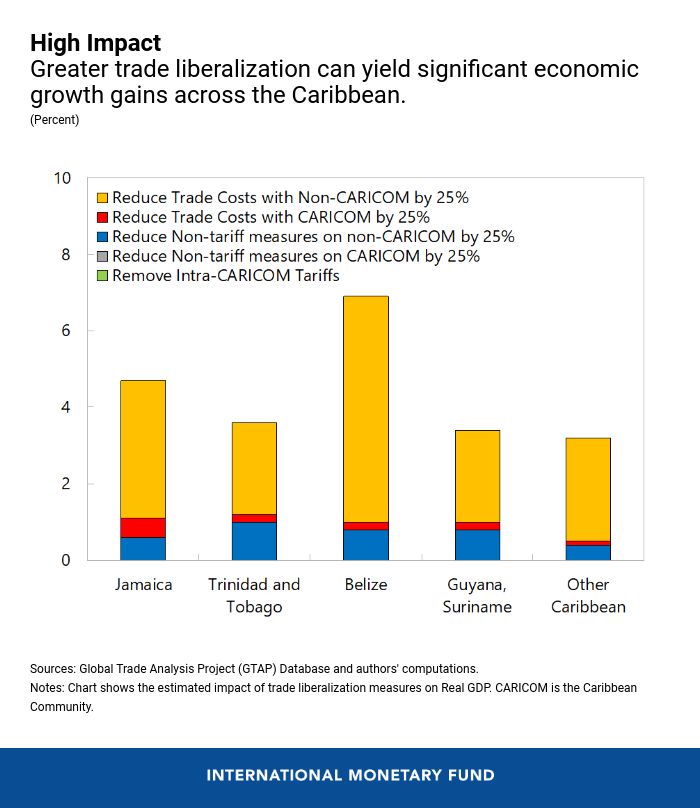
People walk by a waterfront in St. George's, Grenada, which has been a member of the Caribbean Community (CARICOM) since 1974 (photo: iStock/oriredmouse)
Strengthening Caribbean Regional Integration
February 4, 2020
The Caribbean economies have long recognized the value of working together. Improving regional integration—for instance, through more intraregional trade and policy coordination—can help the region’s small-size economies build greater resilience and scale, as well as enhance bargaining power on the global stage.
Related Links
According to the latest IMF research, further liberalizing trade and labor mobility in the region can generate significant economic benefits—potentially over 7 percent of the region’s GDP in 2018.
While policymakers of the Caribbean Community (CARICOM) remain committed to further integration and progress has been made, the implementation of integration initiatives and policies toward the goal of a regional economic union has been slow and needs to be accelerated.
Work in progress
Compared to other well-integrated regions, like the ECCU and EU, the Caribbean lags. The integration indices, which measure the degree of intraregional economic and institutional integration, suggest that Caribbean community’s integration has proceeded in several waves, with periods of integration followed by slowdowns in progress, including in removing remaining tariff and non-tariff barriers to trade and constraints on intraregional labor movement.


Way forward
Greater cooperation is the key to furthering regional integration in the Caribbean. While these economies’ small size and supply constraints may potentially limit benefits from economic integration, acting as a group can enhance the scale, bringing widespread benefits and helping the region further tap into global value chains. That is, regional integration should not be an end-goal, but a means to an end of deepening Caribbean integration into the global economy.
At a time when momentum for economic integration seems to have stalled, close cooperation in high priority areas for the region can help demonstrate benefits of coordinated action and serve as a building block to the ultimate goal of full integration.
Key areas could include:
- Addressing impediments to institutional integration by harmonizing and rationalizing institutions and processes across the region and resolving resource/capacity constraints;
- Facilitating an equitable distribution of benefits through well-structured, adequately-resourced mechanisms to help realign national and regional interests;
- Enhancing functional policy coordination in the areas of common challenges, including building climate resilience, containing violent crime, and coordinating tax policies and systems to limit harmful competition; and
- ensuring financial stability in an increasingly more interconnected financial system.
What is CARICOM?
The Caribbean Community (CARICOM) is comprised of twenty countries (fifteen Member States and five Associate Members), mostly island states in the Caribbean stretching from the Bahamas in the north to Suriname and Guyana in South America. It was established by the English-speaking parts of the Caribbean in 1973 with the primary objectives to promote economic integration and cooperation among its members, ensure that the benefits of integration are equitably shared, and coordinate foreign policy. CARICOM is the oldest existing integration movement in the developing world.


